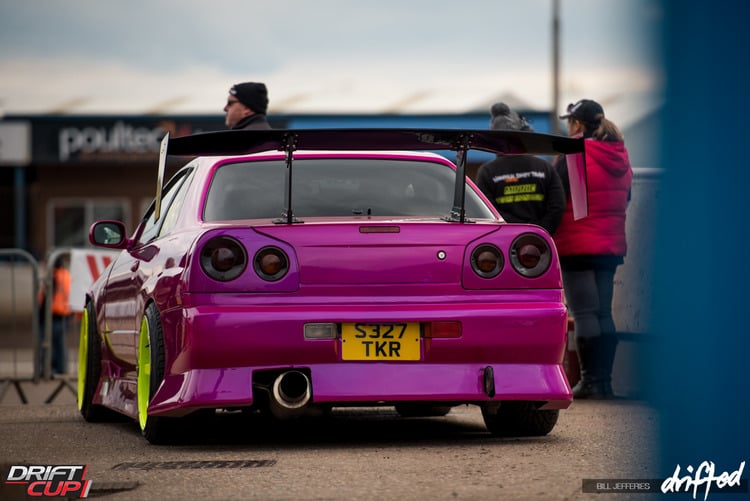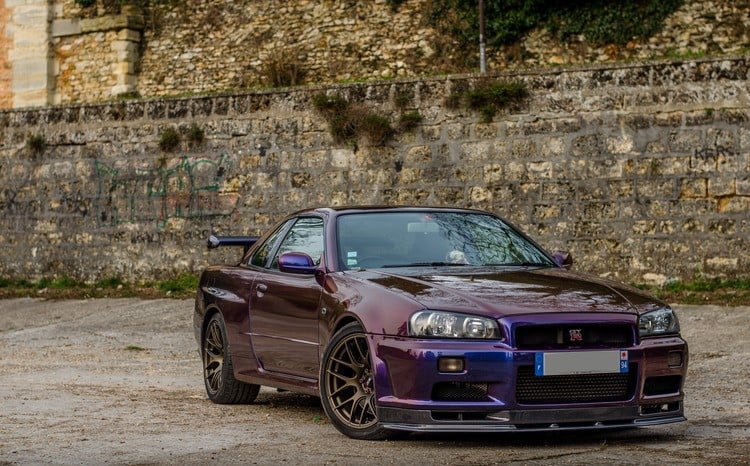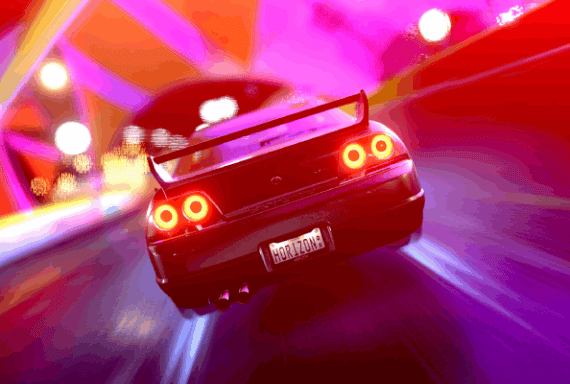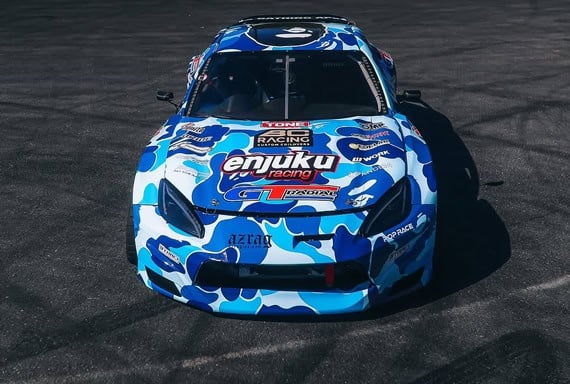GTR R34 – A True JDM legend
It takes three generations to achieve perfection – the Nissan Skyline R34 GT-R is arguably the perfect example. Here’s why the GTR R34 is the best of them all.

Jump To Section
Introduction
The Nissan Skyline has a long history of being recognized as an engineering marvel. The Skyline brand has brought much pride to the Japanese Domestic Market (JDM).
The original Skyline was launched way back in 1957 and was originally produced by another company called the Prince Motor Company.
It was only in 1967 that the company merged with Nissan, and the Skyline started its journey of exponential success.
The Skyline has seen 13 generations, with the current generation launching in 2014.
The topic of today’s article is specifically the 10th generation of the Skyline, more commonly known as the Nissan Skyline R34.
The R34 has earned its place in the automotive Hall of Fame because of its impressive performance, mind-boggling tuning potential, features, and timeless styling and design.
After the R34’s launch, it became notorious for “slightly” understating its horsepower figures.
In reality, the horsepower of the R34s merrily exceeded the Japanese Gentlemen’s Agreement limit between Nissan, Toyota, and Honda.
This limit was set at 280 horsepower, and all three companies were guilty of understating their vehicles’ power figures during the late 1990s and early 2000s.
After the R34 Skyline GT-R appeared in the Fast and Furious franchise as Paul Walker’s main car, the Nissan Skyline GT-R gained popularity in North American and European markets and quickly became an icon.

People worldwide have a special desire for the Bayside Blue and Midnight Purple colors due to their demand and rarity.
The R34 was in production from 1998-2001. However, production for specific versions (NISMO Z-Tune) continued until 2005, while the GT-R version was in production until 2002.
The R34’s Various Models
The Skyline was launched in many different trims. Except for the GT-R and NISMO models, which used an all-wheel drive system known as the ATTESA E-ETS, they were all front-engine, rear-wheel drive.
Similarly, the Skyline was offered as a sedan or a 2-door coupe (GT-R, NISMO).
The Skyline trims have four engines, all inline six-cylinder petrol engines.
From 2.0L (1998 cc) to 2.6L (2568 cc), consumers had options to either go for naturally aspirated or turbocharged engines.
The twin-turbo 2.6L RB26DETT is perhaps the most sought-after engine out of all four. The RB26DETT is compared to the 2JZ, by enthusiasts worldwide – so you can have high expectations from this incredible engine!

This is the engine that came with the GT-R variants.
Out of all 18 models of the Skyline GT and Skyline GT-R, the model that became the reason for the R34’s ultimate success was the GT-R V Spec.
Launched in 1999, this model had it all, from the ATTESA E-TS Pro all-wheel drive system, Super HICAS four-wheel steering, and twin turbochargers to body modifications such as alloy wheels and additional aero parts (spoiler, diffuser, etc.).
ATTESA, the all-wheel drive system, was not only beneficial for the vehicle’s acceleration but also played a huge role in handling the vehicle due to its advanced traction on most terrains.
The Super HICAS system was also a major reason for the praise for handling the R34 GT-R.
The turbochargers received a ball-bearing core. The N1 turbos had a metal exhaust wheel and a ball-bearing center section.
Temperature probes were fitted to the side and rear turbo dump pipes in the V-Spec models.
R34 V-spec
The R34 V-spec was released at the same time as the Stock R34.
It weighed 20 kg more than the Standard (with a curb weight of 1560 kg), but it was distinguished by two key features: the ATTESA E-TS Pro and the aerodynamic package.
The latter included the front undertray as well as the carbon-fiber rear diffuser.
The front undertray had two diffuser-style hollows that directed air to the brakes and suspension while providing some downforce.
A NACA duct was used to cool the A-LSD, and fins were used to minimize turbulence and guide airflow. The Le Man Company provided this outstanding piece of carbon-fiber artistry.
The suspension was another significant difference between V-Spec and Standard models.
The R34 V-spec had the same spring rates as the R33 V-spec. The springs lowered the V-Spec by 15 mm compared to the standard model.
The diameter of the front anti-roll bar remained the same as on the R33 V-spec (22.2mm).
The R33’s rear anti-roll bar was thinner (24.2mm on the R34, 26.5mm on the R33). Because it was simpler to spin the car around turns, the suspension was set up for more neutral handling.
It was, however, an oversteering configuration. The R34 could drift in second-gear bends, albeit faster than the R32 and R33.
The shock absorbers in the V-spec were more powerful than those in the standard BNR34.
1999 R34 V-Spec N1
The 1999 R34 V-spec has a limited edition, the NI (January 1999). It featured several mechanical changes.
The exhaust manifold was replaced with one that had bigger flanges.
Steel-bladed turbine wheels with ball bearings were installed onto the N1 engine (compressor: wheel 006, housing TO4B, A/R 0.6, trim SST; turbine: wheel GT25, housing T25, A/R 0.64, trim 62T).
The engine oil cooler was standard, with the NISMO gearbox, drivetrain oil coolers, and the carbon-fiber intercooler air guide available as dealer options.
The air conditioner, sound system, rear window wiper mechanism, rear fog lamps, remote control entry system, trunk lid trim, glove box lamp, and glove box damper were all removed to save weight.

Other differences from the GT-R V-spec were the absence of UV-reducing tinted glass and the replacement of door marker lamps with door marker reflectors.
The leather pad on the center console and the leather parking brake lever was replaced with resin ones. The A/C was replaced with a heater, but the ABS remained.
The main trend in creating Ni versions is clear: they got heavier from generation to generation.
he R32 V-spec Ni weighed 30 kg less than a normal R32 V-spec; the R33 V-spec N1 weighed 20 kg less than a regular R33 V-spec; and the R34 V-spec N1, with a curb weight of 1550 kg, weighed just 10 kg less than a regular R34 V-spec.
One significant mechanical change was implemented for all subsequent BNR34 versions: Nissan and NISMO engineers noted that the rear brakes were weak, so they added bigger 322mm rear brake rotors and a new caliper.
This enhanced the balance of the brakes, the operating temperature, and the stopping power.
BNR34 V-spec II and V-spec II N1
In October 2000, a new edition of the Standard model was released, along with two Victory Specification versions: the V-spec II and V-spec N1 II.
The only significant mechanical modifications were the rear N1-spec brakes.
Many cosmetic aspects, however, were restyled to make the V-spec II seem better than the standard V-spec.
Among the most significant alterations was the production of a carbon-fiber hood by the Toray Company. Above the turbos, it had a NACA duct that decreased temperatures by 5 degrees Celsius.
Instead of yellow turn signals and side markings, the 2000 R-34 vehicles have white ones.
There were additional changes on the inside. The grey trim on the seats and doors was replaced with black trim.
Grey replaced the red stitching on the seats, steering wheel, handbrake lever, and soft cushion on the center console.
The center console’s color changed from iridium to gold. Drilled aluminum brake pedals and a footrest were added, as was a new switch for the power mirror.
V-spec II
The black, unpainted carbon fiber hood separated the N1 exterior from the V-spec N1. The body color was only white, as was customary for Nissan.
M-spec R34
The M-spec was introduced in May 2001. The letter “M” stands for “Mizuno,” who took over as head of the GT-R engineering team from Kozo Watanabe.
Mizuno-san was also the Chief Engineer of the new 2008 GT-R R35, so it’s interesting to notice the changes he made in developing his version of the BNR34.
The M-spec was a premium vehicle weighing 20 kg more than the V-spec. It was designed for clients who preferred driving their vehicles on public roads rather than racetracks. Like the UK model, the M-spec features attractive, heated leather seats embroidered with the GT-R emblem.

These luxurious amenities, however, do not reflect Mizuno’s technical approach to the GT-R.
The suspension was the key difference between the Watanabe GT-R and the Mizuno GT-R. Even the slightest road undulations were absorbed by the new Ripple Control dampers (front 260 kg (0.3 m/sec) rebound, 110 kg (0.3 m/sec) bump, and rear 114 kg (0.3 m/sec) rebound, 75 kg (0.3 m/sec) bump).
Check out our coilover guide for more information on dampers.
They enhanced ride quality and increased tire contact with the road.
Although the spring rates remained the same, the revised rear anti-roll bar highlighted Mizuno’s approach to GT-R chassis development.
The diameter of the bar was just 0.8 mm thicker than the front, whereas the R32’s rear anti-roll bar was 5.4 mm thicker than the front.
According to Mizuno-san, the V-spec was designed for sprint racing and the M-spec for endurance racing.
Of course, this was a metaphor, but it tells us a lot: the M-spec was designed for safe, neutral handling on difficult road surfaces.
At 60 mph, roughness in the road surface drove the rear of a Porsche 911 Carrera 4 up and outwards, but an M-spec took the same curve at 5 mph quicker with no loss of grip (EVO, September 2001).
Mizuno-san prioritized rear traction, as seen by the suspension change. He appears to have objected to Ito-Watanabe’s GT-Rs’ oversteering.
R34 V-spec II Nür and M-spec Nür
The R34’s final limited editions were the V-spec II Nür and the M-spec Nür.
The “Nür” emblems establish the GT-R’s connection to its “birthplace,” the engine rocker covers were golden champagne in color, and the cabin had a 300-kph speedometer.
The key characteristic of these automobiles, however, was the N1 engine.
This engine could reliably produce 500 ps or more with upgraded injectors, camshafts, engine computer maps, and increased boost.

The 241U N1 block was utilized, as were 24U N1 pistons and con-rods, N1 con-rod bearings and piston pins, and an N1 balanced crankshaft. N1 oil pump, N1 water pump, Ni valvetrain components, N1 water, air hoses, and R34 N1 turbochargers received exhaust pressure via N1 exhaust manifolds with bigger flanges on the turbo ends.
The exhaust gases were routed through steel downpipes. However, both automobiles were marketed as having just 280 horsepower.
The R34 V-Spec II was priced at 5.748,000 yen, while the Nür variant was priced at 6,100,000 yen.
An R34 M-spec costs 5.950,000 yen, while the Nür variant costs 6,300,000 yen.
Regardless of the relatively high costs, 750 V-spec II Nürs and 250 M-spec Nürs were sold.
GTR R34 Performance & Handling
The powerhouse under the hood of the GT-R is the twin-turbocharged, 2.6-liter inline-six RB26DETT, which had been used in previous GT-R models (R32 and R33).
The engine was first rated at 276 hp and 353 Nm of torque, but by the end of production, the power rating had increased to around 316 hp and 392 Nm of torque.
It was well known amongst enthusiasts that the RB26 had more power than “advertised” (280 hp) due to the Japanese gentleman’s agreement.
In a parallel system, twin turbochargers were used on this engine.
The RB26 is widely known and has become quite popular for its strength and tuning potential, with existing examples well over 1100 horsepower.
For tuners, the RB26 is a platform that is easy to modify.
The handling of the R34 GT-R was highly praised by critics and enthusiasts alike.
This was due to the Japanese outdoing their competition by engineering two systems ahead of time.
First was the ATTESA-ETS Pro system used in the GT-R V Spec (Victory Specification). ATTESA is an acronym for “Advanced Total Traction Engineering System for All-Terrain.” Attesa was first introduced with the R33 GT-R, which preceded the R34 GT-R.

The system helped improve acceleration and traction at high speeds. Moreover, Nissan had also developed HICAS, a four-wheel steering system.
The acronym HICAS stands for “High Capacity Actively Controlled Steering.” In the R34 GT-R, however, Super HICAS is used.
The major difference between HICAS and its Super counterpart is that with Super HICAS, Nissan moved from a hydraulic system towards using an electric actuator for the rear steering rack, making the system much lighter.
Super HICAS was not focused on parking aid but was designed to help people corner efficiently and safely at high speeds.
The additional handling and acceleration features of the R34 GTR made it a tough contender on circuit tracks and time attacks.
GTR R34 Interior, Quality, and Technology
The Skyline GT-R R34 was packed with features ahead of time and became the reason for its legendary status today.
The multi-function display in the dashboard’s center shows all sorts of levels, such as oil temperatures and turbo boost levels.
A total of seven different live readings of engine and vehicle statistics were shown on this 5.8-inch display.
Back in the day, it seemed like a huge technological marvel; however, today, it doesn’t seem much more than a simple computer showing different measurements and sensor readings.
The R34 GT-R wasn’t sought after specifically for its interior quality and features because, to be honest, no one has bought a GT-R for its interior. It’s more functional than fancy and useful than just a bunch of quirky gimmicks.

The interior is made up of leather and plastic materials. Although it tries to be more executive and luxurious with leather, it still feels like hard plastic under that fragrant slick of added skin.
The overall look is simple, and the driver isn’t distracted much by the presence of different buttons and controls in the cockpit.
The N1 models, being homologation specials designed for race use, do not include even the most basic features, such as air conditioning or a rear wiper.
The general opinion seems to be that one buys a GT-R for the things you can’t see, which work their magic from under the hood or under the vehicle itself.
People generally wouldn’t care if they didn’t get a hand-crafted Italian leather interior with showy features.
Conclusion
The Skyline GT-R has a great legacy, one spanning over 56 years.
The R34 was the last GT-R to carry the “Skyline” badge, as in 2002, Nissan announced that the two brands would be split into two, creating a brand-new car for the future.
In 2007, Nissan unveiled the successor to the R34 GT-R, named simply the Nissan GT-R.
This new GT-R (somewhat controversially) carries the legacy of “Godzilla” and is one of the world’s top supercars. The new GT-R is also better-known as the R35.
The R34 was everything its predecessors were and much more.
Enthusiasts today wish they had the chance to own what is referred to as one of the greatest performance machines to ever come out of Japan.
From being a movie icon to blowing people’s minds with its unimaginable tuning potential, the Skyline R34 GT-R competes for the title of the greatest sports car ever made.






















